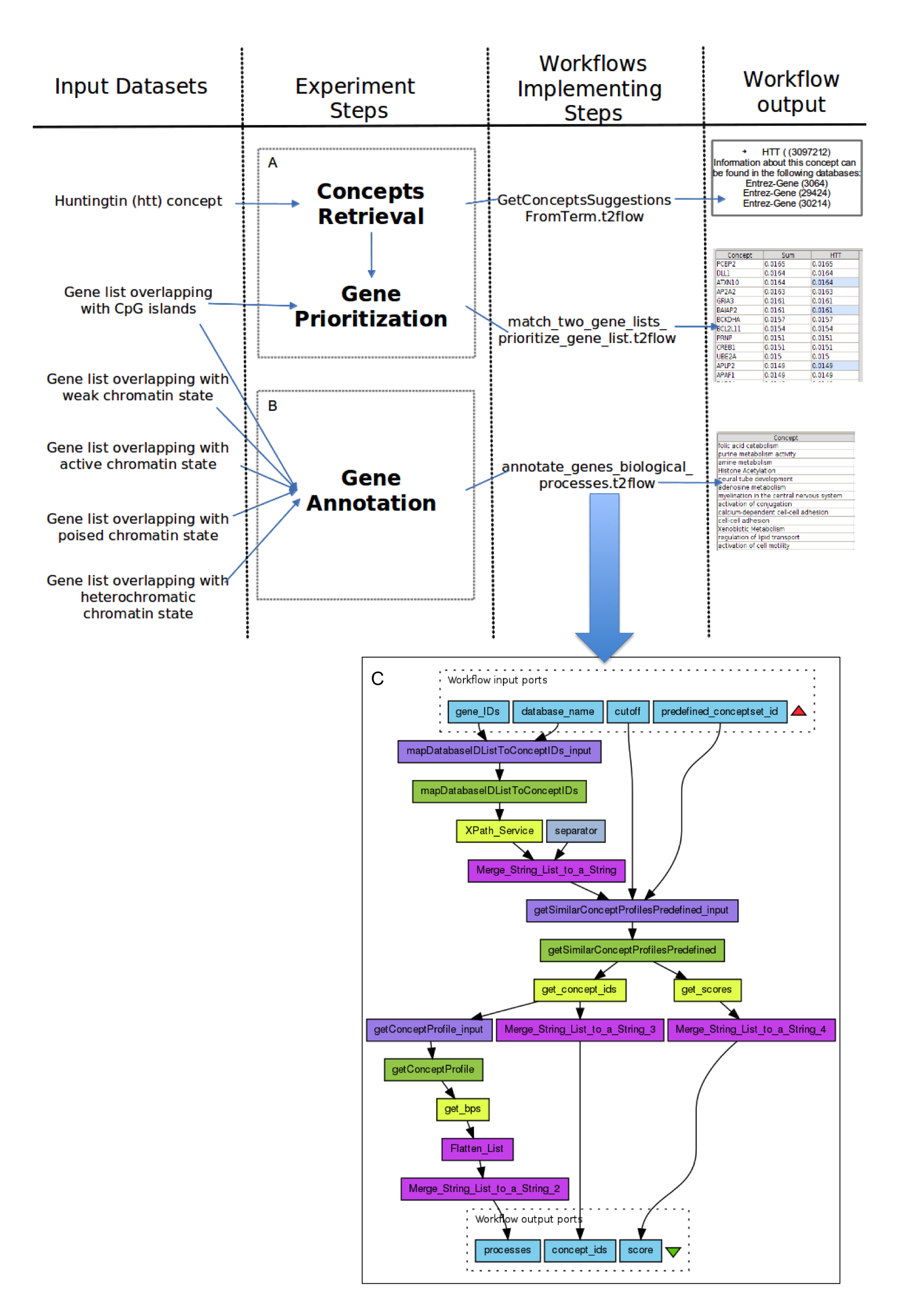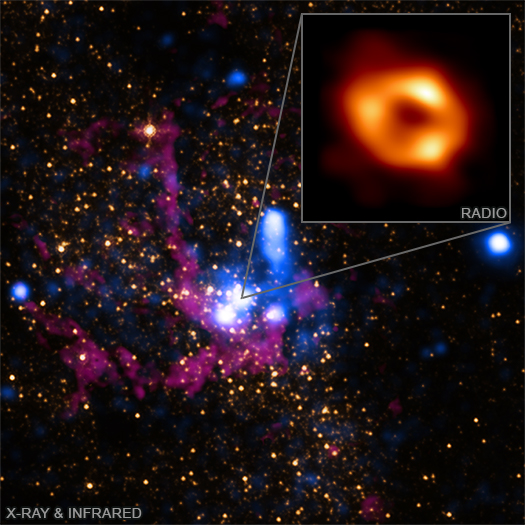8,037 Matching Annotations
- May 2022
-
www.youtube.com www.youtube.com
-
www.youtube.com www.youtube.com
-
www.youtube.com www.youtube.com
-
www.youtube.com www.youtube.com
-
www.youtube.com www.youtube.com
-
nova.astrometry.net nova.astrometry.net
Tags
Annotators
URL
-
-
davide.eynard.it davide.eynard.it
-
www.flickr.com www.flickr.com
-
eatyourgreens.org.uk eatyourgreens.org.uk
-
vimeo.com vimeo.com
Tags
Annotators
URL
-
-
code.flickr.net code.flickr.net
-
code.activestate.com code.activestate.com
-
Machine Tags
A new kind of tags — machine tags — are supported now. A machine tag, e.g.
meta:language=pythonconsists of a namespace (meta), a key (language) and a value (python). Everyone can created machine tags, but the meta: namespace is protected and tags in there will be created by the site itself.The codesite itself uses machine tags to make various properties of recipes accessible to the search:
-
meta:languageThe programming language of the recipe, e.g. python, perl or tcl.
-
meta:min_$lang_$majorverThose tags describe the minimum language version. If a recipe requires Python 2.5 it would have the tag
meta:min_python_2=5. -
meta:licenseThe license that was selected by the author, e.g. psf, mit or gpl.
-
meta:locThis tag contains a number describing the lines of code in a recipes. It counts only the number of lines in the code block but not any lines in the discussion of in comments. This makes it possible to search for short recipes with less than ten lines or very large ones.
-
meta:score
The current score of the recipe. This is the same number that is displayed besides the recipe title and can only be influenced by voting on recipes. That way you could even search for down-voted recipes
-
meta:requiresStores information about additional requirements of the recipes, e.g. required python modules. You can find recipes using python's collections module that way.
All those tags cannot be changed directly because they are generated from a recipe's properties.
-
Tags
Annotators
URL
-
-
code.activestate.com code.activestate.com
Tags
Annotators
URL
-
-
aml-org.github.io aml-org.github.io
Tags
Annotators
URL
-
-
aml-org.github.io aml-org.github.io
Tags
Annotators
URL
-
-
gist.github.com gist.github.com
-
We also support machine tags that follow the pattern
NAMESPACE:KEY=VALUE. For example:geo:lat=43.555camel:size=mediummachine:tag=with spaceMachine tags are not revealed to the user on the track pages.
-
-
hypothes.is hypothes.is
-
-
www.programmableweb.com www.programmableweb.comAcoustid1
Tags
Annotators
URL
-
-
musicbrainz.org musicbrainz.org
Tags
Annotators
URL
-
-
acoustid.org acoustid.org
Tags
Annotators
URL
-
-
www.youtube.com www.youtube.comMiami1
-
www.youtube.com www.youtube.com
-
www.youtube.com www.youtube.com
-
xkcd.com xkcd.com
Tags
Annotators
URL
-
-
chandra.harvard.edu chandra.harvard.edu
Tags
Annotators
URL
-
-
ssp.imcce.fr ssp.imcce.fr
Tags
Annotators
URL
-
-
cdsweb.u-strasbg.fr cdsweb.u-strasbg.fr
Tags
Annotators
URL
-
-
cds.unistra.fr cds.unistra.fr
Tags
Annotators
URL
-
-
simbad.u-strasbg.fr simbad.u-strasbg.fr
-
-
hypothes.is hypothes.is
-
-
www.programmableweb.com www.programmableweb.comGitHub1
Tags
Annotators
URL
-
-
stackoverflow.com stackoverflow.com
-
e.g. https://api.github.com/search/issues?q=repo:nodejs/node+type:issue+state:closed
json { "total_count": 6595, "incomplete_results": false, "items": [...] }
-
-
github.com github.com
-
Get all repos from the user
https://api.github.com/users/:user/repos, then look foropen_issues_countin the named repo.HI, when you get issues by page like
issues?page=0&per_page=5numberproperty from first element will be count of issues.
Tags
Annotators
URL
-
-
-
-
mars.nasa.gov mars.nasa.gov
Tags
Annotators
URL
-
-
bioregistry.io bioregistry.io
Tags
Annotators
URL
-
-
docs.identifiers.org docs.identifiers.org
-
Tags
Annotators
URL
-
-
datatracker.ietf.org datatracker.ietf.org
Tags
Annotators
URL
-
-
www.eidr.org www.eidr.org
-
www.programmableweb.com www.programmableweb.comEIDR1
Tags
Annotators
URL
-
-
mobilitydata.org mobilitydata.org
-
doc.transport.data.gouv.fr doc.transport.data.gouv.fr
-
www.velib-metropole.fr www.velib-metropole.fr
-
foodkg.github.io foodkg.github.ioFoodKG1
Tags
Annotators
URL
-
-
www.w3.org www.w3.org
-
-
migusto.migros.ch migusto.migros.chBiscôme1
Tags
Annotators
URL
-
-
developers.google.com developers.google.com
-
```html
<script type="application/ld+json"> { "@context": "https://schema.org", "@type": ["MathSolver", "LearningResource"], "name": "An awesome math solver", "url": "https://www.mathdomain.com/", "usageInfo": "https://www.mathdomain.com/privacy", "inLanguage": "en", "potentialAction": [{ "@type": "SolveMathAction", "target": "https://mathdomain.com/solve?q={math_expression_string}", "mathExpression-input": "required name=math_expression_string", "eduQuestionType": ["Polynomial Equation","Derivative"] }], "learningResourceType": "Math solver" }, { "@context": "https://schema.org", "@type": ["MathSolver", "LearningResource"], "name": "Un solucionador de matemáticas increíble", "url": "https://es.mathdomain.com/", "usageInfo": "https://es.mathdomain.com/privacy", "inLanguage": "es", "potentialAction": [{ "@type": "SolveMathAction", "target": "https://es.mathdomain.com/solve?q={math_expression_string}", "mathExpression-input": "required name=math_expression_string", "eduQuestionType": ["Polynomial Equation","Derivative"] }], "learningResourceType": "Math solver" } </script>```
-
-
lune.space lune.space
Tags
Annotators
URL
-
-
-
-
webmention.app webmention.app
Tags
Annotators
URL
-
-
bioportal.lirmm.fr bioportal.lirmm.fr
-
bmcbioinformatics.biomedcentral.com bmcbioinformatics.biomedcentral.com
-
github.com github.com
-
<details open> <summary> Nanotate Annotations Samples
</summary> ```json [ { "id":"d5JrdABbEeuatj9X3vvoXw", "authority":"__world__", "url":"https://protocolexchange.researchsquare.com/article/pex-1069/v1", "created":"2020-09-27T00:50:41.265044+00:00", "updated":"2020-09-27T00:50:41.265044+00:00", "title":[ "Sample preparation and imaging procedures for fast and multiplexed superresolution microscopy with DNA-PAINT-ERS" ], "refs":[ ], "isReply":false, "isPagenote":false, "user":"acct:miguel.ruano@hypothes.is", "displayName":null, "text":"", "prefix":"for 10 minutes. Wash with PBS3. ", "exact":"Add imaging buffer with desired ratios of Buffer C (500 mM), ethylene carbonate, and IS-CF660R at 1-2 nM final concentration. The exact concentration of IS may need to be adjusted depending on the target and based on the imaging kinetics.", "suffix":"", "start":15158, "end":15396, "tags":[ "step" ], "group":"__world__", "ontologies":[ ] }, { "id":"FrhgjABcEeu5B4dnXgvb_A", "authority":"__world__", "url":"https://protocolexchange.researchsquare.com/article/pex-1069/v1", "created":"2020-09-27T00:55:08.276888+00:00", "updated":"2020-10-05T14:15:00.764415+00:00", "title":[ "Sample preparation and imaging procedures for fast and multiplexed superresolution microscopy with DNA-PAINT-ERS" ], "refs":[ ], "isReply":false, "isPagenote":false, "user":"acct:miguel.ruano@hypothes.is", "displayName":null, "text":"my other text modificate", "prefix":"ed ratios of Buffer C (500 mM), ", "exact":"ethylene carbonate", "suffix":"", "start":15219, "end":15237, "tags":[ "reagent" ], "group":"__world__", "ontologies":[ "CHEBI" ], "settings":{ "bio_annotations":[ "" ] } }, { "id":"7Z1sugBbEeu9_wtvk1iAjw", "authority":"__world__", "url":"https://protocolexchange.researchsquare.com/article/pex-1069/v1", "created":"2020-09-27T00:53:59.317703+00:00", "updated":"2020-09-30T00:39:50.822216+00:00", "title":[ "Sample preparation and imaging procedures for fast and multiplexed superresolution microscopy with DNA-PAINT-ERS" ], "refs":[ ], "isReply":false, "isPagenote":false, "user":"acct:miguel.ruano@hypothes.is", "displayName":null, "text":"", "prefix":"10 minutes. Wash with PBS3. Add ", "exact":"imaging buffer", "suffix":"", "start":15162, "end":15176, "tags":[ "reagent" ], "group":"__world__", "ontologies":[ "CHEBI" ], "settings":{ "bio_annotations":[ "http://purl.obolibrary.org/obo/CHEBI_35225" ] } } ] </summary>
-
-
nanotate.bitsfetch.com nanotate.bitsfetch.comNanotate1
-
Tool for the generation of 'nanopublications' based on hypothesis annotations
-
-
cris.maastrichtuniversity.nl cris.maastrichtuniversity.nl
-
hypothes.is hypothes.is
-
-
hypothes.is hypothes.is
-
-
www.slideshare.net www.slideshare.net
Tags
Annotators
URL
-
-
www.slideshare.net www.slideshare.net
Tags
Annotators
URL
-
-
fr.slideshare.net fr.slideshare.net
Tags
Annotators
URL
-
-
www.programmableweb.com www.programmableweb.comGitbook1
Tags
Annotators
URL
-
-
www.librarything.com www.librarything.com
Tags
Annotators
URL
-
-
www.programmableweb.com www.programmableweb.com
Tags
Annotators
URL
-
-
www.programmableweb.com www.programmableweb.com
-
OPDS Endpoint: http://www.feedbooks.com/catalog.atom
Tags
Annotators
URL
-
-
addons.mozilla.org addons.mozilla.org
-
blog.feedbooks.com blog.feedbooks.com
-
www.w3.org www.w3.org
-
quotebacks.net quotebacks.net
-
-
hypothes.is hypothes.is
-
-
tc39.es tc39.es
Tags
Annotators
URL
-
-
robertknight.github.io robertknight.github.io
Tags
Annotators
URL
-
-
brat.nlplab.org brat.nlplab.org
Tags
Annotators
URL
-
-
www.programmableweb.com www.programmableweb.comGenius1
Tags
Annotators
URL
-
-
www.slideshare.net www.slideshare.net
-
stackoverflow.com stackoverflow.com
-
developers.facebook.com developers.facebook.com
Tags
Annotators
URL
-
-
www.macs.hw.ac.uk www.macs.hw.ac.uk
-
www.slideshare.net www.slideshare.net
-
www.slideshare.net www.slideshare.net
-
bioportal.bioontology.org bioportal.bioontology.org
Tags
Annotators
URL
-
-
addons.mozilla.org addons.mozilla.org
-
hypothes.is hypothes.is
-
-
htmldom.dev htmldom.dev
Tags
Annotators
URL
-
-
chromedevtools.github.io chromedevtools.github.io
Tags
Annotators
URL
-
-
javascript.info javascript.info
Tags
Annotators
URL
-
-
github.com github.com
-
www.smartjava.org www.smartjava.org
-
www.slideshare.net www.slideshare.net
-
www.w3.org www.w3.org
Tags
Annotators
URL
-
-
www.youtube.com www.youtube.com
-
-
Tags
Annotators
URL
-
-
www.slideshare.net www.slideshare.net
Tags
Annotators
URL
-
-
paul.kinlan.me paul.kinlan.me
Tags
Annotators
URL
-
-
gist.github.com gist.github.com
Tags
Annotators
URL
-
-
en.wikipedia.org en.wikipedia.org
Tags
Annotators
URL
-
-
webhooks.pbworks.com webhooks.pbworks.com
-
www.w3.org www.w3.orgWebSub1
Tags
Annotators
URL
-
-
hypothes.is hypothes.is
-
-
www.smashingmagazine.com www.smashingmagazine.com
-
css-tricks.com css-tricks.com
-
There are three major HTML elements involved in quotations: <blockquote> <q> <cite>
-
-
gist.github.com gist.github.com
-
Markdown's supported, as long as you have a blank line between the </summary> tag and the following content.
-
-
linter.structured-data.org linter.structured-data.org
Tags
Annotators
URL
-
-
datatracker.ietf.org datatracker.ietf.org
-
mention-tech.appspot.com mention-tech.appspot.com
Tags
Annotators
URL
-
-
commentpara.de commentpara.de
Tags
Annotators
URL
-
-
-
github.com github.com
-
datatracker.ietf.org datatracker.ietf.orgrfc86311
-
4. Link Relations for Web Services
In order to allow Web services to represent the relation of individual resources to service documentation/description and metadata, this specification introduces and registers three new link relation types.
4.1. The service-doc Link Relation Type
The "service-doc" link relation type is used to represent the fact that a resource or a set of resources is documented at a specific URI. The target resource is expected to provide documentation that is primarily intended for human consumption.
4.2. The service-desc Link Relation Type
The "service-desc" link relation type is used to represent the fact that a resource or a set of resources is described at a specific URI. The target resource is expected to provide a service description that is primarily intended for machine consumption. In many cases, it is provided in a representation that is consumed by tools, code libraries, or similar components.
4.3. The service-meta Link Relation Type
The "service-meta" link relation type is used to link to available metadata for the service context of a resource. Service metadata is any kind of data that may be of interest to existing or potential service users, with documentation/description being only two possible facets of service metadata. The target resource is expected to provide a representation that is primarily intended for machine consumption. In many cases, it is provided in a representation that is consumed by tools, code libraries, or similar components.
Since service metadata can have many different purposes and use many different representations, it may make sense for representations using the "service-meta" link relation to offer additional hints about the specific kind or format of metadata that is being linked.
This definition of the "service-meta" link relation makes no specific assumptions about how these link hints will be represented, and the specific mechanism will depend on the context where the "service-meta" link relation is being used.
One example is that a "service-desc" link may identify an OpenAPI description, which is supposed to be the machine-readable description of a Web API. A "service-meta" link may identify a resource that contains additional metadata about the Web API, such as labels that classify the API according to a labeling scheme and a privacy policy that makes statements about how the Web API manages personally identifiable information.
Tags
Annotators
URL
-
-
www.pariscope.fr www.pariscope.fr
-
Tags
Annotators
URL
-
-
clairnote.org clairnote.org
-
-
hypothes.is hypothes.is
-
-
ror.readme.io ror.readme.ioREST API1
Tags
Annotators
URL
-
-
ror.readme.io ror.readme.ioROR1
Tags
Annotators
URL
-
-
fraidyc.at fraidyc.at
-
-
hypothes.is hypothes.is
-
-
hypothes.is hypothes.is
-
-
abseil.io abseil.io
-
hypothes.is hypothes.is
-
-
codesandbox.io codesandbox.io
-
-
www.researchobject.org www.researchobject.org
Tags
Annotators
URL
-
-
reliance.rohub.org reliance.rohub.orgROHub1
Tags
Annotators
URL
-
-
bioschemas.org bioschemas.org
-
Bioschemas Types Included into Schema.org
Tags
Annotators
URL
-
-
workflowhub.eu workflowhub.eu
Tags
Annotators
URL
-
-
www.ncbi.nlm.nih.gov www.ncbi.nlm.nih.gov
-
www.slideshare.net www.slideshare.net
-
www.researchobject.org www.researchobject.org
Tags
Annotators
URL
-
-
zenodo.org zenodo.org
Tags
Annotators
URL
-
-
wiki.myexperiment.org wiki.myexperiment.org
-
www.programmableweb.com www.programmableweb.com
-
wiki.myexperiment.org wiki.myexperiment.org
-
wiki.myexperiment.org wiki.myexperiment.org
-
vocab.linkeddata.es vocab.linkeddata.es
-
The paper describes four ontologies for representing workflows in Research Objects, and includes examples and motivation scenarios.
The ontologies developed make use of and extend existing well known ontologies, namely the Object Reuse and Exchange (ORE) vocabulary, the Annotation Ontology (AO) and the W3C PROV ontology (PROVO). We illustrate how the ontologies can be utilized using a real-world scenario, in which scientists created a Workflow Research Object for an investigation on the Huntington's disease. We also present the tools we developed for managing Workflow Research Objects.

-
-
www.myexperiment.org www.myexperiment.org
-
www.protocols.io www.protocols.io
Tags
Annotators
URL
-
-
bio-protocol.org bio-protocol.org
Tags
Annotators
URL
-
-
smartprotocols.github.io smartprotocols.github.io
Tags
Annotators
URL
-
-
api.elifesciences.org api.elifesciences.org
Tags
Annotators
URL
-
-
www.programmableweb.com www.programmableweb.comeLife1
Tags
Annotators
URL
-
-
edamontology.org edamontology.org
-
-
-
-
hypothes.is hypothes.is
-
-
www.openarchives.org www.openarchives.org
Tags
Annotators
URL
-
-
www.openarchives.org www.openarchives.org
Tags
Annotators
URL
-
-
math.libretexts.org math.libretexts.orgHome1
-
-
indieweb.org indieweb.org
-
-
raft.github.io raft.github.io
Tags
Annotators
URL
-
-
stackoverflow.com stackoverflow.com
-
```html
<iframe width="420" height="345" src="http://www.youtube.com/embed/oHg5SJYRHA0?autoplay=1" frameborder="0" allowfullscreen></iframe>```
-
-
hypothes.is hypothes.is
-
-
hypothes.is hypothes.is
-
-
hypothes.is hypothes.is
-
- Apr 2022
-
anno-rep.org anno-rep.org
-
-
hypothes.is hypothes.is
Tags
Annotators
URL
-
-
hypothes.is hypothes.is
-
-
dokie.li dokie.li
-
-
hypothes.is hypothes.is
-
-
github.com github.com
Tags
Annotators
URL
-
-
docs.google.com docs.google.com
-
```js document.createAnnotation()
document.getAnnotations(nodes)
document.removeAnnotation(annotation) ```
```js Annotation#addTarget(target)
Annotation#addBody(body) ```
-
-
hypothes.is hypothes.is
-
-
hypothes.is hypothes.is
-
-
hypothes.is hypothes.is
-
-
hypothes.is hypothes.is
-
-
hypothes.is hypothes.is
-
-
mindgraph.co mindgraph.co
Tags
Annotators
URL
-
-
code.flickr.net code.flickr.net
Tags
Annotators
URL
-
-
www.zotero.org www.zotero.org
Tags
Annotators
URL
-
-
editor.citationstyles.org editor.citationstyles.orgAbout1
-
-
juris-m.github.io juris-m.github.io
Tags
Annotators
URL
-
-
docs.citationstyles.org docs.citationstyles.org
Tags
Annotators
URL
-
-
docs.citationstyles.org docs.citationstyles.org
Tags
Annotators
URL
-
-
api.groundspeak.com api.groundspeak.com
Tags
Annotators
URL
-


